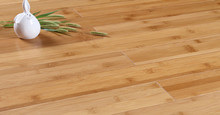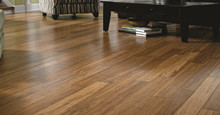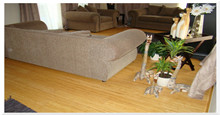In recent years, bamboo flooring has gained significant traction among homeowners in Japan. This shift towards bamboo-based materials is not just a trend; it reflects a growing appreciation for sustainable living and aesthetics that are deeply intertwined with cultural values. As traditional Japanese architecture emphasizes harmony with nature, bamboo flooring emerges as an ideal choice, embodying both functionality and beauty.
Sustainability at the Core
One of the primary reasons homeowners are turning to bamboo flooring is its environmental sustainability. Bamboo is a fast-growing grass that can reach full maturity in just three to five years, compared to hardwood trees, which can take decades to grow. This rapid growth cycle makes bamboo a renewable resource that can be harvested without depleting forests or damaging ecosystems.
Moreover, bamboo absorbs 35% more carbon dioxide compared to equivalent stand-alone hardwood forests. This characteristic not only contributes to a lower carbon footprint but also enhances air quality. For environmentally conscious consumers, these attributes align perfectly with the values of sustainable living.
Aesthetic Appeal
Aesthetic considerations play a significant role in the popularity of bamboo flooring. The natural grain patterns and warm tones of bamboo create an inviting atmosphere in any home. This is especially appealing in Japanese interiors, which often blend minimalism with organic elements. Bamboo flooring can complement the serene aesthetic of tatami mats and provide a modern touch to contemporary designs.
Homeowners appreciate the variety that bamboo offers. Available in several colors and finishes, it caters to personal styles, whether one prefers a light natural look or a darker stained finish. This versatility makes bamboo not only functional but also an appealing choice for any room in the house.
Durability and Maintenance
When it comes to flooring, durability is paramount. Bamboo is remarkably resilient; it boasts a hardness that often rivals traditional hardwoods. With proper care, bamboo flooring can withstand high traffic while retaining its beauty. This durability makes it an ideal choice for families with children and pets, where wear and tear are significant considerations.
Additionally, maintaining bamboo flooring is straightforward. Unlike some other flooring materials that require specialized cleaning products, bamboo can be cleaned using a damp mop and a mild detergent. This ease of maintenance appeals to busy households seeking a practical solution without compromising on aesthetics.
Cultural and Traditional Significance
In Japan, bamboo has long been associated with beauty, strength, and flexibility. Traditionally, bamboo has been used in various aspects of Japanese life, from architecture to art. Integrating bamboo flooring into modern homes connects residents to their cultural heritage while embracing contemporary design principles.
Bamboo also carries spiritual significance in Japanese culture. It symbolizes resilience and perseverance, qualities that resonate deeply with the values of many homeowners today. By choosing bamboo, residents are not only making an eco-friendly choice but are also paying homage to materials that have held significance for generations.
Climate Adaptability
Japan experiences a range of climatic conditions, from humid summers to cold winters. Bamboo flooring has a natural ability to regulate temperature, making it comfortable to walk on in different seasons. This adaptability helps maintain a pleasant indoor environment, enhancing comfort throughout the year.
Moreover, the moisture resistance of bamboo makes it suitable for various locations in the home, including kitchens and bathrooms, where traditional hardwood might warp or suffer from humidity. The ability of bamboo to withstand fluctuating conditions further solidifies its position as a preferred flooring material for Japanese homes.
Economic Viability
From an economic standpoint, bamboo flooring can be a cost-effective choice. While the initial investment may vary based on quality and installation, the longevity and minimal maintenance costs make it a wise financial decision in the long run. As homeowners recognize the value of durability and reduced upkeep, bamboo flooring has become increasingly popular in residential renovations and new builds.
Furthermore, the growing availability of bamboo flooring options within Japan has led to competitive pricing. Local suppliers and manufacturers are now offering a range of products that cater to various budgets, making it accessible to a broader audience.
Challenges and Considerations
Though bamboo flooring has many benefits, it‘s essential to acknowledge potential challenges. Not all bamboo flooring products are created equal; the quality can vary significantly based on manufacturing practices. Homeowners are encouraged to seek reputable brands that ensure sustainable harvesting and high-quality production methods.
Additionally, while bamboo flooring is durable, it is still susceptible to scratching, particularly with pets or heavy furniture. Homeowners should consider using area rugs and protective pads to maintain the floor‘s integrity.
In terms of installation, some may require professional help, especially when it comes to acclimation and ensuring proper fitting. It‘s advisable to consult with experts who can guide homeowners through the installation process, ensuring a flawless finish.
The Future of Bamboo Flooring
As environmental awareness rises and homeowners continue to prioritize sustainability, bamboo flooring‘s role in Japanese homes is expected to grow even further. Innovative designs and product varieties will likely emerge, reflecting evolving aesthetics while maintaining a commitment to eco-friendliness.
In the broader context of construction and interior design, bamboo flooring stands as a testament to the fusion of nature and modern living. Its adaptability, beauty, and sustainability align seamlessly with the values that underpin many Japanese homes. As these trends continue to develop, bamboo flooring is likely to remain a favored choice, enriching the living spaces of those who appreciate nature and craftsmanship.
This growing preference for bamboo flooring not only enhances the aesthetic appeal of homes but also contributes to a more sustainable future, ensuring that the homes of tomorrow can be both beautiful and environmentally responsible.



